Authors:
ABSTRACT
Aim
Aim of this study was the evaluation of the microhardness of 4 dental sealants polymerised with two different curing
units.
Methods
Twenty samples (5x5x2 mm) were prepared with 4 different sealants; 10 samples for each group were polymerised
with a plasma curing unit (Apollo 95 E DMD) and 10 with a halogen curing light (Heliolux DLX Vivadent ETS, Schaan, Liechtenstein).
For each section 6 Vickers microhardness measurements were performed (VMHT 30A, Leica Wien, Austria), 3 on the surface exposed
to the light and 3 on the opposite surface. After the baseline assessment all samples were stored in artificial saliva at 37 C for 30,
60, 90, 180 and 360 days, and then analysed again with the microhardness indenter and observed under steromicroscope 10X (Leica
DM2500 Wien, Austria). Data were then statistically analysed.
Results
The hybrid composite Tetric flow (group IV) showed the
higher microhardness values compared to the other tested materials (group I, II, III); surfaces exposed to curing light showed higher
microhardness values than opposite surfaces. Moreover, a significant microhardness reduction was observed after 30 days; values
remained unmodified after 60, 90, 180 and 360 days. Statistics Data were then statistically analysed with Anova test for repeated
measures, with a global significance level of 0.05.
Conclusion
Because of the good mechanical properties of dental sealants they
represent the first choice materials in pits and fissures sealing.
PLUMX METRICS
Publication date:
Keywords:
Issue:
Vol.8 – n.4/2007
Page:
Publisher:
Cite:
Harvard: L. Bevilacqua, A. Sossi, M. Cadenaro, R. Di Lenarda (2007) "Comparative evaluation of the microhardness of 4 dental sealants", European Journal of Paediatric Dentistry, 8(4), pp179-182. doi:
Copyright (c) 2021 Ariesdue

This work is licensed under a Creative Commons Attribution-NonCommercial 4.0 International License.
